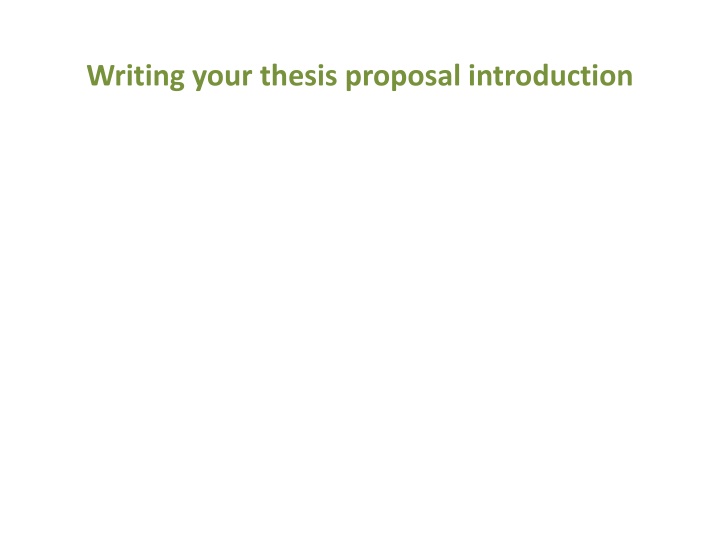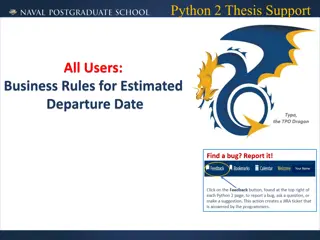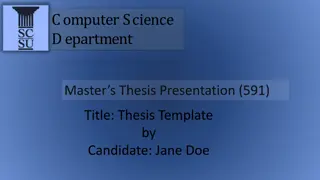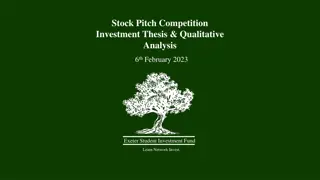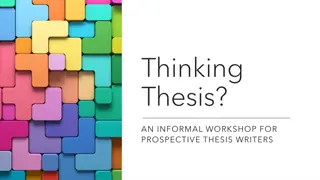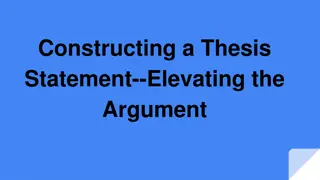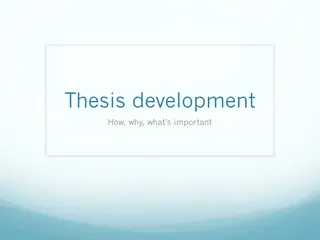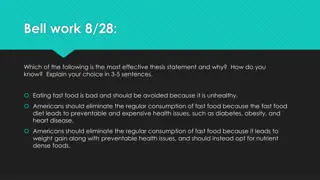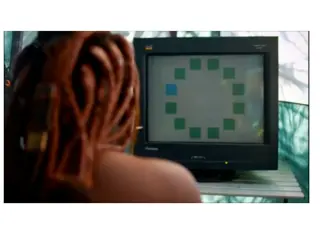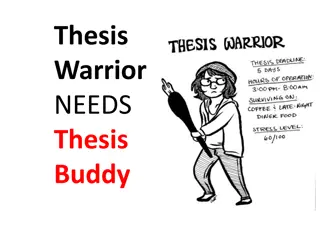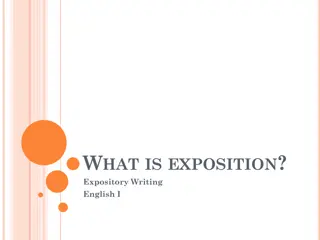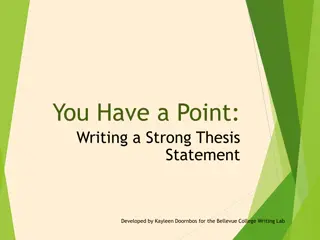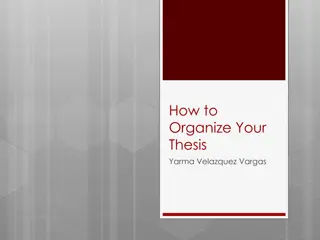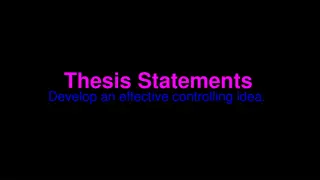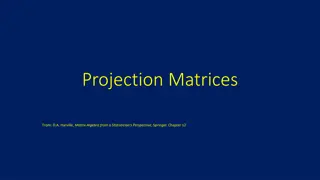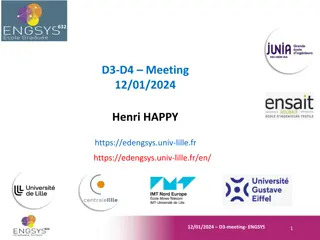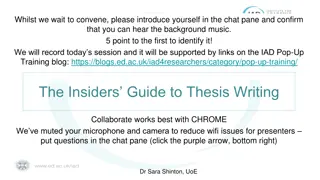Crafting Thesis Introduction: Scientific Story & Essential Pieces
Establish the groundwork for your thesis proposal with a scientific narrative answering key questions to hook readers. Outline the goal, background, scope, and thesis statement. Learn the importance of citations, subheadings, and the impact of your research. Develop a compelling hook to engage readers in your research on urban heat mitigation and its implications for climate justice in NYC.
Download Presentation

Please find below an Image/Link to download the presentation.
The content on the website is provided AS IS for your information and personal use only. It may not be sold, licensed, or shared on other websites without obtaining consent from the author.If you encounter any issues during the download, it is possible that the publisher has removed the file from their server.
You are allowed to download the files provided on this website for personal or commercial use, subject to the condition that they are used lawfully. All files are the property of their respective owners.
The content on the website is provided AS IS for your information and personal use only. It may not be sold, licensed, or shared on other websites without obtaining consent from the author.
E N D
Presentation Transcript
Introduction: Tell the scientific story of your topic Sets up your project by answering these questions: What am I studying? Why is it an important topic? Why should the reader read on? What do we know already about this topic? What is unknown about your topic (the challenge or problem)? How will your research help address the problem?
Introduction: The Essential Pieces Introduction Outline: Goal of the study: what you are you are undertaken Hook: broad context to capture the reader's interest Background: start from a broad picture then narrowing to your specific research Sufficient detail for newreader (general science background) to understand the context and significance Reviews / Synthesizeswhat is known about your research topic Highlights what is unknown about your research topic Scope of your work: how your work will address the unknown piece Thesis statement: compelling statement about what you are proposing to do Introduction components: Citations: sufficient number of to show sophisticated understanding of topic Cite those who had the idea first AND the most recent and relevant work Subheadings: logical subheadings help you and the reader
Introduction: The hook in your own words In <12 words fill in each box 2. What s your specific problem / unknown related to your topic? 3. So what? Why do we 5. Implications of research care about this topic? 1. Your general topic area: I am interested in studying 4. Your approach to study this unknown?
In <12 words fill in each box Introduction: The hook in your own words Neighborhood/community differences in benefits (heat mitigation) received from NYC trees? 2. What s your specific problem / unknown related to your topic? 3. So what? Why do we 5. Implications of research knowledge on urban heat mitigation Improve care about this topic? Climate justice! 1. Your general topic area: I am interested in studying Ecosystem services may benefit some communities more than others Urban Heat Island City guide where trees planting needed/failed Social and ecological impacts of Million Trees in cities 4. Your approach to study this unknown? NYC census tracts (study area) iTree to estimate ecosystem services Correlate socio-economics and trees in neighborhoods
Introduction: The Flow (triangle method!) Goal of triangle: tell a story while moving from very general to specifics of your topic 1. Big picture of topic (include hook to grab readers) 2. Literature review on background & previous research (what is known on topic) 3. Define problem / knowledge gap (what are unknowns) 4. How your thesis will help fill knowledge gap 5. Your thesis statement Defining the problem & generate curiosity Remind the reader how your thesis addresses the problem Include key references
